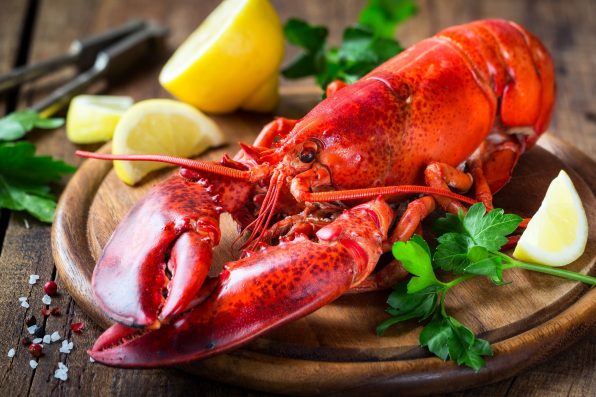Lobster Used To Be Fed To Prisoners, But Here’s How It Became A Delicacy

When laying out a lavish feast, lobster is always part of the fare. The culinary delicacy is associated with luxury, high class, and extravagance.
But before lobster became a gourmet food, it was served to prisoners. The average household avoided lobster and refused to eat it at all. So, how did lobster go from cheap jailhouse grub to a five-star delicacy?
In the 17th century, lobsters were abundant on the beaches of the Massachusetts Bay Colony. Hundreds of them would wash up on shore, especially after storms.
When the colonists first arrived in New England, they discovered that the local Algonquins relied on lobster as a source of protein.
They also learned that you had to cook and eat them quickly before the meat had a chance to spoil. When a lobster dies, its stomach enzymes are immediately released into the rest of its body. This causes the meat to rot, which can make anyone who eats it sick.
During the first few years of their arrival, the colonists struggled to survive, and lobster was one of their main food sources.
This earned lobsters the reputation of a food of desperation. Their disgustingly fishy smell and their tendency to go bad quickly didn’t help matters.
Lobsters were only something to be eaten when times were tough. So, the people who continued to eat it were poor or lower class, which is how it came to have the nickname of the “poor man’s protein.” The seafood was also used as fertilizer for crops and to feed livestock.
The crustacean did not become a symbol of luxury until the 1880s when restaurants on the East Coast started serving it. By the early 1900s, it was associated with decadence and was considered the food of millionaires.

kuvona – stock.adobe.com – illustrative purposes only
There were a few reasons why lobster managed to claw its way up the culinary ladder. In the 1860s, canning became the best method for getting food rations to thousands of Civil War soldiers.
Once lobster was cooked, it turned out that it was quite easy to can. So, people from as far as California began to buy and eat Maine lobster because it was cheap, high in protein, and just something to fill their bellies.
With the rise of railroads and tourism, people who had eaten canned lobster and were not aware of its low-class status traveled to New England to try fresh lobster for the first time.
They found it to be incredibly delicious. As a result, demand for fresh lobster skyrocketed in other cities across the nation.
Since lobsters needed to be shipped live, it cost more to serve them. In just a span of about 50 years, lobster was rebranded as a rich, upper-class food. Today, Maine fishermen catch around 100 million pounds of lobster each year.
Sign up for Chip Chick’s newsletter and get stories like this delivered to your inbox.
More About:News